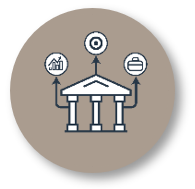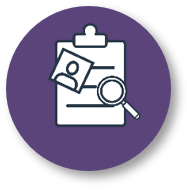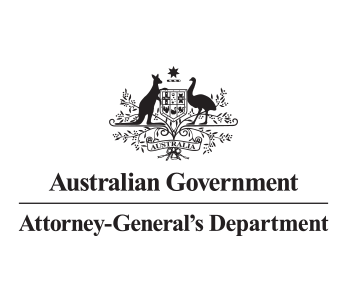Understand the framework
On this page
The Commonwealth Fraud and Corruption Control Framework came into effect on 1 July 2024.
The Commonwealth Fraud and Corruption Control Framework 2024 is designed to support Australian Government entities to effectively manage the risks of fraud and corruption.
About the framework
Purpose
The purpose of the framework is to support an effective system of governance and accountability across Commonwealth entities for protecting public resources from fraud and corruption.
The framework establishes the key elements entities require for effective fraud and corruption control. These are:
- governance and oversight
- rigorous risk assessments
- informed and targeted control plans
- effective controls encompassing appropriate prevention, detection, investigation, referral and reporting mechanisms.
Elements of the framework
The framework consists of 3 parts:
- Fraud and Corruption Rule (Section 10 of the Public Governance, Performance and Accountability (PGPA) Rule 2014) provides the legislative basis for the Commonwealth’s fraud and corruption control arrangements.
- Fraud and Corruption Policy sets out the key procedural requirements for accountable authorities of non-corporate Commonwealth entities (NCEs) to establish and maintain an appropriate system of fraud and corruption control for their entity.
- Fraud and Corruption Guidance (Resource Management Guide 201 - Preventing, detecting and dealing with fraud and corruption) provides more detailed guidance to help officers who are responsible for fraud and corruption control within entities to implement the requirements of the rule and the policy.
Additional resources
Guide to incorporating corruption control into risk management frameworks
We developed this guidance to help Commonwealth officials integrate corruption risk management into broader organisational risk management frameworks and policies.
View the corruption control guidance
Information sheets
We developed the following information sheets to help Commonwealth officials to understand and implement the framework obligations.
Information Sheet – Element 1: Fraud and corruption risk assessments
How entities can better understand and document their exposure to fraud and corruption, the associated risks and existing control arrangements

Information Sheet – Element 2: Fraud and corruption control plans
How entities can document, communicate, manage and monitor activities that manage an entity’s identified fraud and corruption risks

Information Sheet – Element 3: Reviewing control effectiveness
How entities can ensure controls are designed correctly and operate effectively to reduce or manage risks

Information Sheet – Element 4: Governance and oversight
How entities can enhance integrity, accountability and quality of outcomes through appropriate governance and oversight

Information Sheet – Element 5: Preventing fraud and corruption
Different strategies and mechanism that entities can employ to prevent fraud and corruption

Information Sheet – Element 6: Detecting fraud and corruption
Different mechanisms that entities can employ to detect fraud and corruption

Information Sheet – Element 7: Investigation and other responses
A range of actions entities can take to effectively respond to incidents of fraud and corruption

Information Sheet – Element 8: Recording and reporting fraud and corruption
How entities can record, report and share information about fraud and corruption and use the information strategically
Implementation roadmap
We developed this roadmap to provide officials with an example of a step-by-step approach to implementing the framework elements.
View the Implementation roadmap
Webinars and training
We hosted a series of webinars for Commonwealth officials in April and May 2024 about the framework. To access webinar slides and recordings, contact info@counterfraud.gov.au.
We offer a Counter Fraud Practitioner Training Program for Commonwealth officials engaged in fraud and corruption control. The training program consists of 5 full-day interactive sessions on:
- Understanding and communicating the fraud problem
- Fraud risk assessment
- Fraud controls
- Data in fraud control and fraud control assurance
- Fraud control investment.
To find out more or apply for upcoming training opportunities, visit Counter Fraud Practitioner Training Program.
To find out more about broader government training opportunities, visit the National Training Register.
Other legislation
Public Governance, Performance and Accountability Act 2013
The PGPA Act sets out the financial management, broader governance, and performance and accountability arrangements for the Commonwealth public sector. It sets out obligations for entities and Commonwealth officials for the use and management of public resources.
Public Governance, Performance and Accountability Rule 2014
The PGPA Rule establishes the requirements and procedures necessary to give effect to the governance, performance and accountability matters covered by the PGPA Act.
National Anti-Corruption Commission Act 2022
The NACC Act 2022 defines corrupt conduct and the jurisdiction of the National Anti-Corruption Commission.
Crimes Act 1914
The Crimes Act sets out Commonwealth powers, authorities and obligations for dealing with Commonwealth criminal offences and related matters.
Criminal Code Act 1995
The Criminal Code sets out Commonwealth criminal offences, elements of offences and defences.
Public Service Act 1999
The Public Service Act is the principal Act governing the operation of the Australian Public Service.
Public Service Regulations 1999
The Public Service Regulations include provisions about the functions of the Australian Public Service Commissioner and the Merit Protection Commissioner, the employer powers of Agency Heads, and use and disclosure of personal information.
Proceeds of Crime Act 2002
The Proceeds of Crime Act provides a scheme to trace, restrain and confiscate the proceeds of crime against Commonwealth law.
Proceeds of Crime Regulations 2019
The Proceeds of Crime Regulations 2019 prescribe a number of matters related to the operation of the POC Act, including some definitions and procedural requirements.

